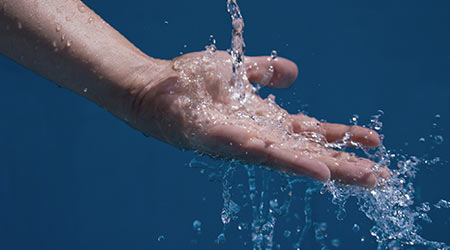
Water is a “Universal Solvent” and, as such, every technician should appreciate that water is essential to any cleaning process where a liquid is involved. This understanding allows the custodial team to solve cleaning problems in the most effective, and most environmentally-safe manner.
Engineered Water (EW), as defined by the Engineered Water Consortium, means “Water engineered to meet the performance requirements of professional cleaning, sanitizing and/or disinfecting, with long-term value and green factors as the key uptake and ethical drivers, and On Site Generation (OSG) as a common denominator.”
But to understand engineered water, one must first understand water.
What is it and why isn't water on the periodic table of elements? The reason is, because the periodic table only includes individual chemical elements and water does not consist of a single element.
Water is a molecule of bonded hydrogen and oxygen atoms. The smallest particle of water is a water molecule, which is made of two atoms of hydrogen bonded to one atom of oxygen. Its formula is H2O and it can be broken down into its components, so it is not an element. Water is made of three atoms — two are hydrogen and one is oxygen.
Complicated? Not really, as changes to water can improve its cleaning power and ability. Water is the foundation of cleaning in nearly every cleaning product.
This subject is complicated and thus is why it is important that you understand the complexities of the base liquid product you are using in your liquid cleaning programs.
David Thompson is the Director of Education for GEM Supply, responsible for four Learning Centers in Central Florida. He is also the host of a weekly internet broadcast show, “Beyond Clean with Dave”, which focuses on the messages within the professional cleaning industry: healthy, positive and progressive. Dave can be contacted at DThompson@GCICertified.com
posted on 6/12/2017

 Celebrating BSCAI's 60th Anniversary eBook
Celebrating BSCAI's 60th Anniversary eBook The Down and Dirty on Cleaning in Virus Season
The Down and Dirty on Cleaning in Virus Season How Surfactant Use is Expanding in Commercial Cleaning
How Surfactant Use is Expanding in Commercial Cleaning